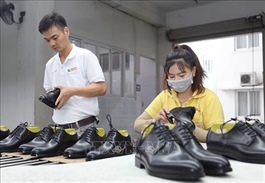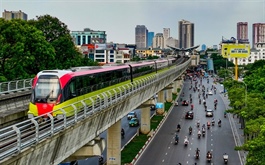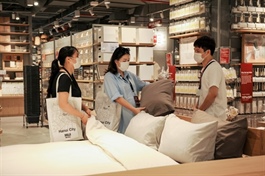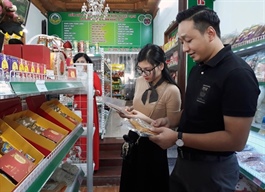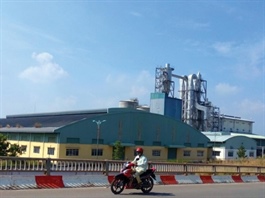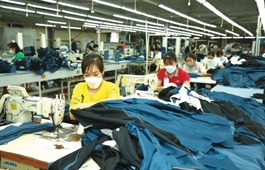Việt Nam exporters brace for tougher US market
Việt Nam exporters brace for tougher US market
A fresh 20 per cent tariff and tougher US import rules are forcing Việt Nam’s exporters to move fast lest they lose ground in their biggest market, according to the Việt Nam Trade Promotion Agency (Vietrade).

Delegates discuss the current situation and challenges to exporting to the US at a seminar in HCM City late last week. — Photo courtesy of the organiser |
A fresh 20 per cent tariff and tougher US import rules are forcing Việt Nam’s exporters to move fast lest they lose ground in their biggest market, according to the Việt Nam Trade Promotion Agency (Vietrade).
Speaking at a seminar on “With US Tariffs in Place, Việt Nam Must Speed Up,” Vũ Bá Phú, general director of Vietrade, said the US had long been Việt Nam’s top export market.
Trade between the two countries grew exponentially to reach US$132 billion last year, while Việt Nam’s exports in the first half of 2025 rose by 29 per cent year-on-year to $70.91 billion.
Despite its new tariffs, the US remained an attractive market, Phú said.
“Whether the tariff is 20 per cent or 40 per cent, we still have to export to the US. The question is how to do it in the most advantageous way.”
He pointed out that the challenge was not just the tariff but a series of “technical gateways.”
Green standards and international certification had become mandatory “passports” for market entry, and factories wanting to keep customers must invest in energy-efficient production lines, emission reduction and recycled materials, he said.
Exports to the US grew by 29 per cent this year, driven largely by customers rushing orders to beat the tariffs, and this could leave US importers with high inventories, potentially slowing shipments of products such as wooden furniture and textiles in the latter half of 2025 and possibly early 2026, he said.
Trần Như Tùng, vice chairman of the Việt Nam Textile and Apparel Association, said exports to the US had been growing steadily.
Of Việt Nam’s textile and garment exports of $21.8 billion in the first half of the year, the US accounted for $17.5 billion, he said.
But he too said many buyers scrambled to pre-empt the tariffs, and this could mean a fall in orders in the third quarter.
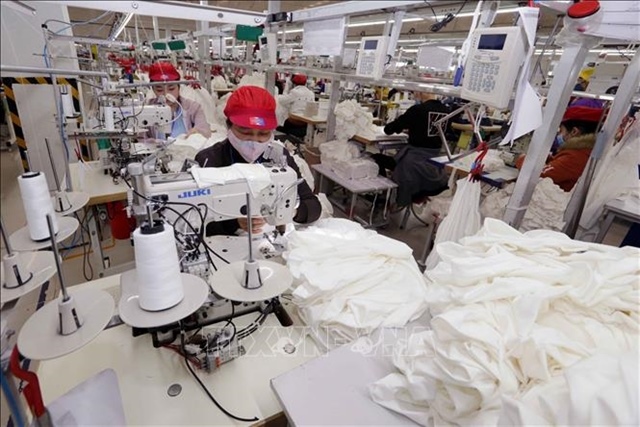
Delegates discuss the current situation and challenges to exporting to the US at a seminar in HCM City late last week. — Photo courtesy of the organiser |
Nevertheless, he was optimistic that once the 20 per cent tariff was firmly in place, the US market would stabilise, orders would resume in the fourth quarter, and the industry would be able to meet its year’s export target of $48 billion.
He also noted that with many buyers now demanding compliance with green standards and international certifications, businesses needed to invest in upgrades to production lines and technologies, raising costs and lowering profit margins. But meeting these requirements would be essential to maintaining market share, he warned.
Competition is also intensifying, according to Tùng. Alongside Bangladesh, India and Indonesia, China remains the largest competitor, boasting scale, a fully integrated supply chain, and superior production capacity.
Việt Nam still relies heavily on imported raw materials from China, making rules of origin a decisive factor.
If a Vietnamese enterprise buys cotton from the US, spins it into yarn, weaves it into fabric, manufactures garments, and then exports, the tariff applicable will be very different from when fabric is imported from China.
Tùng warned that the US might soon require detailed declarations of raw material origin by country, forcing businesses to adopt ERP systems and precise traceability or else face the risk of attracting the highest tariffs.
“Textile and garment enterprises must proactively prepare both in terms of management technology and raw material strategies to meet stringent standards while maintaining profit margins amid increasingly fierce competition.”
Phú pointed out that the 20 per cent tariff on agricultural products would be higher than before, and advised exporters to move towards deep processing and value-added products instead of raw produce.
Export documentation must be clear and transparent, with industry associations conducting cross-checks to prevent origin fraud, as even a single violation could harm the entire sector, he added.
At the seminar, Kris Nguyen, founder of Ocean USA and co-founder of the B2B e-commerce platform VietnamUSA.Arobid.com, said businesses could not succeed in the US market by simply focusing on sales; they would need an ecosystem to build globally competitive capabilities from ESG documentation and traceability to efficient logistics.
Most importantly, everything must be verified and transparent, he added.
- 09:55 13/08/2025




